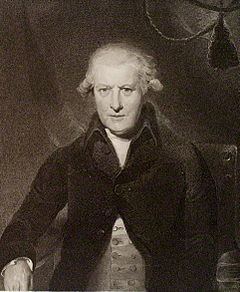Monarch George III Nationality British Spouse(s) Mary Lovell (d. 1764) Role Politician | Political party Whig Name William 2nd Party Whigs | |
 | ||
Preceded by Hon. Henry Bilson Legge Born 5 January 1717 ( 1717-01-05 ) Succeeded by Francis Dashwood, 11th Baron le Despencer Books The Barrinton-Bernard Correspondence and Illustrative Matter, 1760-1770 | ||
William Wildman Shute Barrington, 2nd Viscount Barrington PC (5 January 1717 – 1 February 1793) was a British politician best known for his two periods as Secretary at War during Britain's involvement in the Seven Years War and American War of Independence.
Contents
Background
Barrington was the eldest son of John Barrington, 1st Viscount Barrington, by his wife Anne, daughter of Sir William Daines. The Hon. Daines Barrington, Rear-Admiral the Hon. Samuel Barrington and the Right Reverend the Hon. Shute Barrington, Bishop of Durham, were his younger brothers. He was educated at Geneva, Switzerland, and after succeeding to the title in 1734, he spent some time travelling.
Early political career
As Barrington's title was in the Peerage of Ireland it did not entitle him to a seat in the British House of Lords. In March 1740 he was returned to the House of Commons as Member of Parliament for Berwick-upon-Tweed (a seat his father had represented from 1714–23). Having taken his seat in the Irish House of Lords in 1745, he was appointed one of the Lords Commissioners of the Admiralty in 1746, and was one of the 'managers' of the impeachment of Lord Lovat.
Secretary at War
In 1754, he became Member of Parliament for Plymouth. In 1755 he was made a Privy Counsellor and appointed as Secretary at War in the cabinet of the Duke of Newcastle – a post which held for the next six years throughout the Seven Years' War. During this period his brother led an expedition that captured Guadeloupe.
On 12 March 1761 he was transferred to the office of Chancellor of the Exchequer. In 1762 he became Treasurer of the Navy, and in 1765 returned to his former position of secretary at war. Barrington took his share of the blame for the loss of the American colonies, and was not allowed to forget it. In 1765 the Rockingham whigs in the cabinet wanted to repeal the Stamp Act, but Barrington was among the minority who insisted the Americans should pay their way. This hard line approach to complex legal problems characterised the ministry, the non-importation embargo for instance begun in 1768/9 was bankrupting the East India Company. So when John Wilkes, petitioned to be allowed to take his seat in the Commons, Barrington and the Paymaster of the Forces, Richard Rigby led the cabinet in throwing him out.
In 1775 Barrington ordered a reluctant General Burgoyne to be put in command of the British forces in the north. The two men shared a belief in the same bluewater strategy. Barrington was in charge of the army, but strategic deployment of the Royal Navy was the only to defeat the rebels. Blockade and strangulation of colonial trade should be coupled to a large standing army. But it should not pursue 'a wild goose chase' of Americans around the country. Burgoyne's defeat at Saratoga ended in disgrace and recall to England. His colleague Barrington retained office but only until December 1778, when the Rockingham whigs resumed majority control in the Commons.
For four months in 1782 Barrington was joint postmaster-general.
Family
Lord Barrington married Mary, daughter of Henry Lovell and widow of the Hon. Samuel Grimston, in 1740. There were no surviving children from the marriage. She died in September 1764. Barrington remained a widower until his death at his country estate, Beckett Hall at Shrivenham in Berkshire (now Oxfordshire), in February 1793, aged 76. He was buried in St. Andrew's parish church, Shrivenham. His nephew William Barrington succeeded in the viscountcy.
